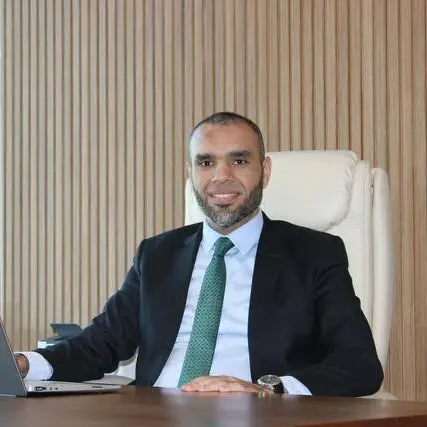PHOTO
DUBAI, UAE: The COVID-19 pandemic has accelerated disruptions in the GCC’s construction industry, creating a mix of opportunities and headwinds. Many of these changes – such as industrialization and digitalisation– were already taking place. To navigate the ‘new normal’, the region’s construction ecosystem needs to make strategic business decisions. Leading regional design-build contractor AMANA is showing the way with a bold, digitally driven growth strategy that’s based on leveraging key trends and changing industry dynamics.
Riad Bsaibes, President and CEO of Amana Investments said: “Construction companies have to invest in digital transformation to future-proof their business and boost profitability in a dynamic market. We are also seeing a greater leaning into sustainability. One of the most significant trend stories of 2021 will be the convergence of manufacturing, technology and construction. We will see modular construction gaining traction, as it reduces waste, cuts projects costs and timelines, while complying with new on-site health and safety protocols.”
More Off-Site Construction
As projects race to completion amidst unprecedented challenges, modular construction has emerged as a viable solution. It offers a safer building environment, decreasing the need for manpower by 30 percent, making it an ideal solution for the post-pandemic environment. Manufacturing construction potentially reduces material waste by 30 percent and improves the work safety environment by up to 70 percent, as compared to traditional construction. These numbers are proven, not projected. AMANA is also launching a platform for seamless off-site construction, which includes its brands DuBox and DuPod.
Moving towards circularity
The construction industry is responsible for one third of global carbon emissions. To motivate the building and construction sector, GCC regulators have enforced building codes such as Estidama so the sector moves towards circularity. For AMANA, sustainability is a key business goal, achieved through digital tools, standardized manufacturing techniques and processes in construction. AMANA is strengthening its solar and energy efficiency business to further support the region’s green agenda.
Digital Disruption
The World Economic Forum estimates within 10 years, full-scale digitalization could unlock savings between USD700 billion to USD1.2 trillion in design, engineering, and construction. Hence, the future success of the construction sector depends on its ability to adopt digital solutions and evolve in sync with market needs. AMANA has invested considerably in digitizing the construction process by migrating to a platform that enables integrated project delivery.
The Revit BIM platform from Autodesk has strengthened operations and fast-tracked project development, given the demands for sustainable construction and Estidama guidelines. AMANA’s use of BIM technology shortens production cycles, smoothens engineering and design flow, and fosters collaboration amongst various departments. Architects, structural engineers and builders to work from a single integrated digital model that contains all information essential to the project. Working on digital twins is the future of construction.
Externally, the digital revolution and focus on food security in the region has also unleashed Design Build opportunities for AMANA in data centers, ecommerce fulfillment centers, agritech, and cold storage facilities.
Market Consolidation
The pandemic delayed projects, due to various new safety measures, posing liquidity challenges to developers and contractors in a softened market. The industry continues to grapple with cash preservation issues across the client and supply base. Delays are also likely to result in increased disputes over contractual completion of projects. The exit of major players in the UAE has impacted current projects, supply chains and banks, creating a market that is ripe for consolidation. From being a fragmented industry with several small players, the region’s construction sector is moving towards consolidation, with larger entities that can take advantage of economies of scale.
Talent risk
As industrialized construction and technology adoption increases, there is a growing gap between the supply of labor and the digital skills needed. Talent acquisition and development will be significant challenges, especially in Saudi Arabia’s growing construction sector. AMANA had a head start on talent acquisition in the Kingdom where it hired local Saudi talent with manufacturing skills. Attracting the best and brightest people, retaining them and keeping them engaged and motivated, remains a significant challenge. Increasing gender diversity within the workforce, fostering an appealing organizational culture and increasing automation are key focus areas for construction leaders like AMANA as it forges ahead in 2021.
© Press Release 2021
Disclaimer: The contents of this press release was provided from an external third party provider. This website is not responsible for, and does not control, such external content. This content is provided on an “as is” and “as available” basis and has not been edited in any way. Neither this website nor our affiliates guarantee the accuracy of or endorse the views or opinions expressed in this press release.
The press release is provided for informational purposes only. The content does not provide tax, legal or investment advice or opinion regarding the suitability, value or profitability of any particular security, portfolio or investment strategy. Neither this website nor our affiliates shall be liable for any errors or inaccuracies in the content, or for any actions taken by you in reliance thereon. You expressly agree that your use of the information within this article is at your sole risk.
To the fullest extent permitted by applicable law, this website, its parent company, its subsidiaries, its affiliates and the respective shareholders, directors, officers, employees, agents, advertisers, content providers and licensors will not be liable (jointly or severally) to you for any direct, indirect, consequential, special, incidental, punitive or exemplary damages, including without limitation, lost profits, lost savings and lost revenues, whether in negligence, tort, contract or any other theory of liability, even if the parties have been advised of the possibility or could have foreseen any such damages.




















